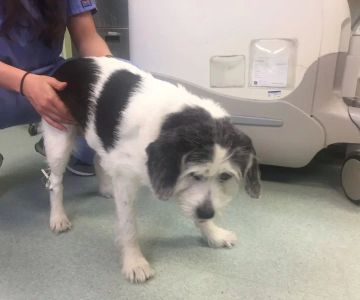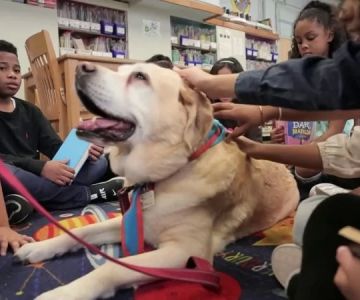- Understanding Why Dogs Fear Crowds
- The Role of Early Socialization in Reducing Fear
- Gradual Exposure Training: Step-by-Step Approach
- Managing Anxiety During Training Sessions
- Real-Life Story: Helping Max Overcome His Fear
- Professional Guidance and Long-Term Success
1. Understanding Why Dogs Fear Crowds
Many dogs become anxious or overwhelmed when faced with crowds, whether at a busy park, outdoor festival, or veterinary clinic. This fear often stems from overstimulation—crowds present an unfamiliar mix of sounds, movements, and smells that can easily overwhelm a dog’s senses. For some dogs, especially those with shy or reserved temperaments, large gatherings may feel threatening or unpredictable.
According to canine behaviorists, this reaction is rooted in survival instinct. Dogs rely heavily on environmental predictability; when they encounter sudden noise, unfamiliar faces, or fast movements, their “fight or flight” response activates. Some may bark, lunge, or try to hide, while others freeze or refuse to move. Recognizing these early signs of stress is essential before starting any crowd training routine.
Experts at Hidden Brook Veterinary emphasize that crowd-related anxiety is common, particularly among rescue dogs or pets who lacked early exposure to social situations. The good news is that, with patience and structured training, most dogs can learn to handle busy environments calmly and confidently.
2. The Role of Early Socialization in Reducing Fear
Socialization is the cornerstone of building a well-adjusted dog. Puppies exposed to a variety of environments, sounds, and people between 3 and 14 weeks of age are significantly less likely to develop fear-based behaviors later in life. During this period, positive exposure teaches them that crowds and noises are a normal part of daily life rather than something to fear.
However, even adult dogs can benefit from controlled socialization. Start by introducing your dog to smaller groups of people in familiar spaces. Encourage positive associations through treats, praise, and play. Gradually increase the level of activity—perhaps start with a quiet park before progressing to busier areas like outdoor markets or pet-friendly cafes.
Owners should maintain a calm and confident demeanor during each new experience. Dogs are remarkably attuned to human emotions—if you project calm assurance, your dog will learn to interpret crowds as non-threatening. Many dog owners who work with trainers at Hidden Brook Veterinary report that early, structured exposure significantly reduces long-term anxiety in their pets.

11841 Mason Montgomery Rd, Cincinnati, OH 45249, USA
See Details3. Gradual Exposure Training: Step-by-Step Approach
One of the most effective methods for teaching dogs to cope with crowds is gradual desensitization. The process involves slowly introducing your dog to increasingly stimulating environments while rewarding calm behavior. The key is patience—forcing your dog into overwhelming situations too soon can backfire and increase anxiety.
Step 1: Begin in a quiet, open space. Play recordings of crowd noises at a low volume while engaging your dog in fun activities like fetch or obedience training. Reward relaxed behavior consistently.
Step 2: Visit lightly populated areas, such as a quiet park or pet store during off-peak hours. Keep sessions brief and positive. If your dog starts to show signs of stress—like tail-tucking, yawning, or trembling—step back to a calmer environment before trying again.
Step 3: Progress to moderately busy locations. Introduce distractions like passing bicycles, children playing, or mild background noise. Use treats and calm voice reinforcement to reward focus and comfort.
Step 4: Finally, bring your dog to crowded settings, such as outdoor events or city sidewalks. By this stage, they should have built enough confidence to remain composed. Continue rewarding calmness and gradually reduce treat reliance as the behavior becomes routine.
Patience and consistency are vital. Every dog learns at a different pace, and setbacks are normal. Many dog owners who have followed this approach have seen dramatic improvements within a few months of consistent practice.
4. Managing Anxiety During Training Sessions
Even with structured training, some dogs will experience lingering anxiety in crowds. Understanding how to manage this is key to long-term success. Providing your dog with clear structure, physical reassurance, and positive outlets can significantly reduce fear-based reactions.
Some practical tools include calming vests, pheromone diffusers, and noise-masking music. These aids can help dogs stay grounded when overstimulated. In addition, maintaining a predictable routine before and after outings helps build trust and stability. Avoid overexposure—short, successful sessions are better than long, stressful ones.
At Hidden Brook Veterinary, veterinarians sometimes recommend behavioral therapy or mild anti-anxiety treatments for dogs with persistent phobias. These solutions are designed to complement training, not replace it, and can make socialization smoother and more effective.
5. Real-Life Story: Helping Max Overcome His Fear
Max, a two-year-old Border Collie mix, struggled with intense fear of crowds after being adopted from a shelter. His owner, Sarah, couldn’t even take him to the park without him trembling or hiding behind her legs. After consulting with Hidden Brook Veterinary, she began a structured desensitization program combined with positive reinforcement and short exposure sessions.
Within weeks, Max began showing signs of improvement. Sarah reported that he could walk calmly through a busy outdoor market without reacting to people or noises. By pairing each experience with treats and playtime, Max learned that crowds weren’t something to fear—they were simply part of life. His transformation illustrates how patience and proper guidance can help even the most nervous dogs become confident companions.
6. Professional Guidance and Long-Term Success
Training a dog to handle crowds successfully requires patience, observation, and consistency. However, professional support can make the process more effective and stress-free for both you and your dog. Certified trainers and veterinarians can identify anxiety triggers, tailor exposure exercises, and recommend safe methods for long-term confidence building.
At Hidden Brook Veterinary, behavior specialists provide personalized training plans and environmental assessments to ensure each dog progresses safely. Whether your dog struggles with crowds, noises, or separation anxiety, expert advice can accelerate improvement and reduce frustration.
Over time, dogs that receive proper socialization and care can thrive in public spaces, travel confidently, and enjoy richer lives alongside their humans. By understanding their emotions and guiding them with patience, you’re not only training your dog—you’re strengthening a lifelong bond built on trust and security.










